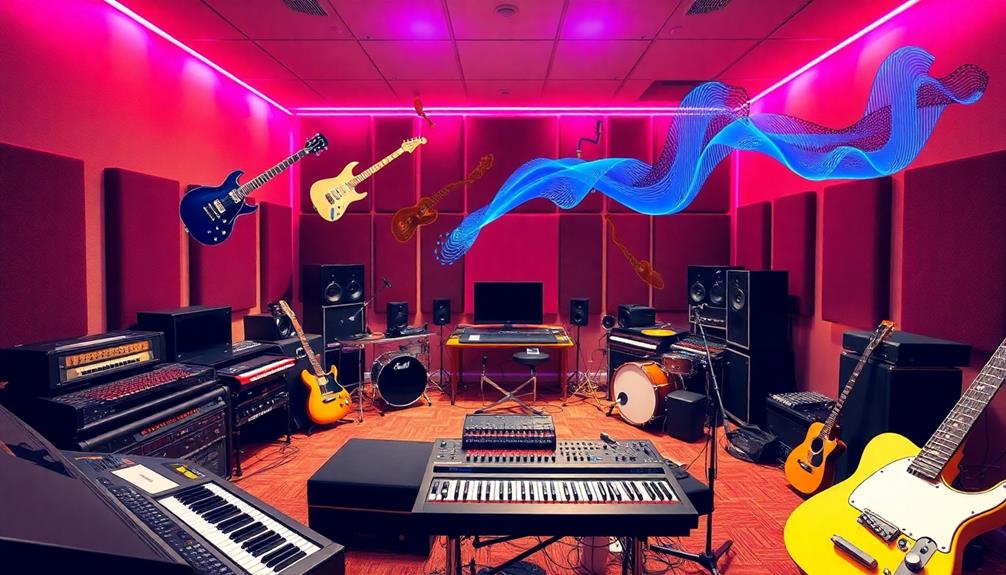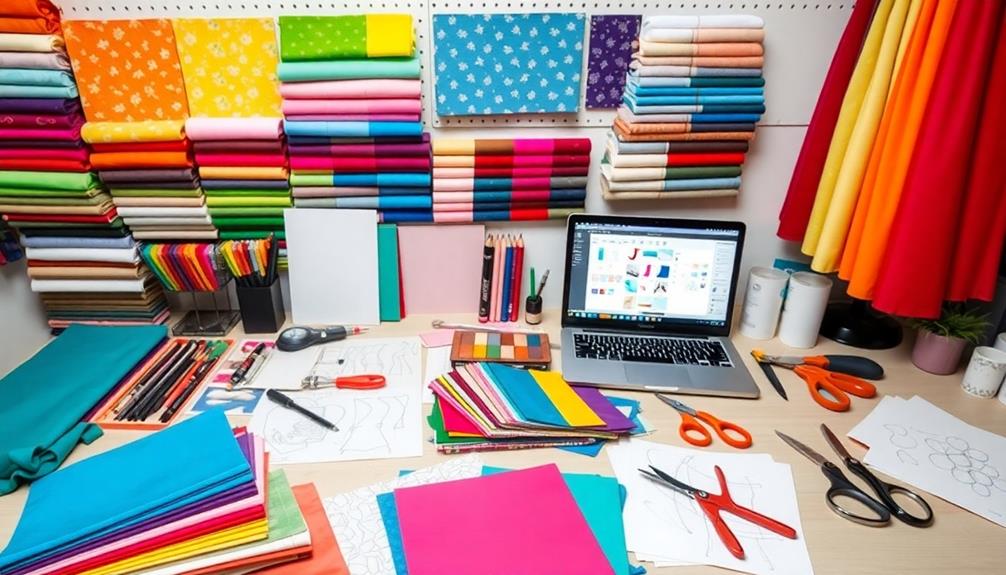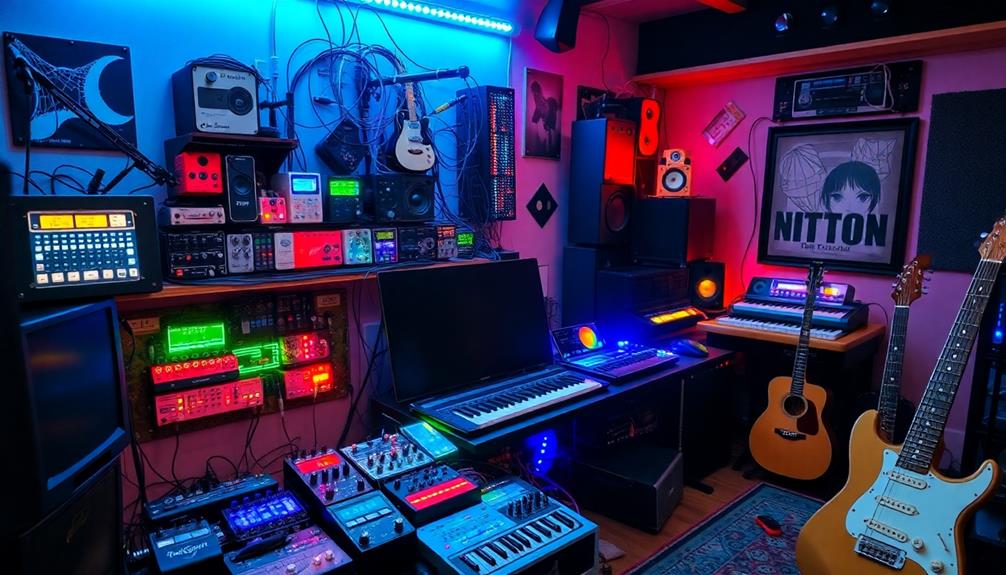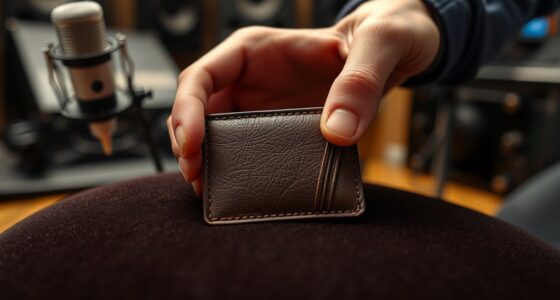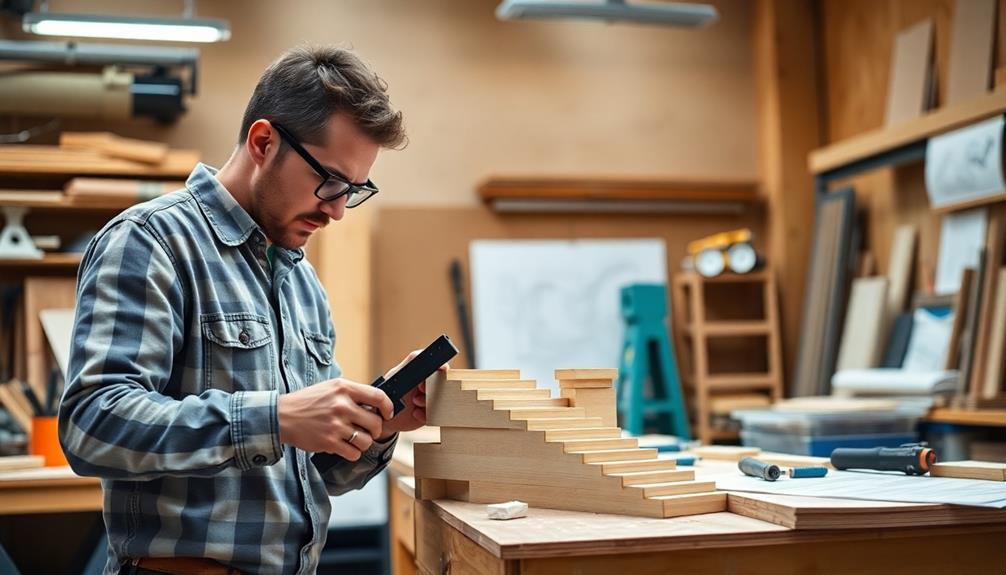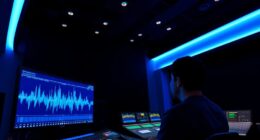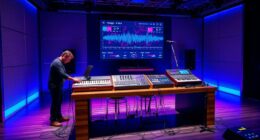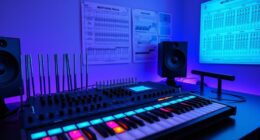To nail genre-specific sound design, start by understanding the unique traits of each genre. Choose sounds that enhance the vibe—like synthesized tones for electronic music or organic instruments for acoustic styles. Layer your sounds carefully, pairing low and high frequencies for depth, and use EQ to maintain clarity. Don't forget the importance of recording authentic audio elements to enrich your projects. Focus on balancing and mixing to guarantee your track translates well across different systems. Exploring new tools can also unleash creative potential. There's much more to master as you refine your craft and elevate your sound!
Key Takeaways
- Understand the unique characteristics of each genre, including instrumentation, tempo, and sound palettes, to enhance authenticity and vibe.
- Select high-quality sounds that fit the genre, as sound selection is often more impactful than mixing techniques.
- Layer sounds thoughtfully, balancing low and high frequencies, while using EQ to ensure clarity in your mix.
- Record authentic audio elements to create an immersive experience, capturing unique sounds that may be absent in studio recordings.
- Continuously learn and adapt by engaging with sound professionals and utilizing technology to refine your sound design skills.
Understanding Genre Characteristics
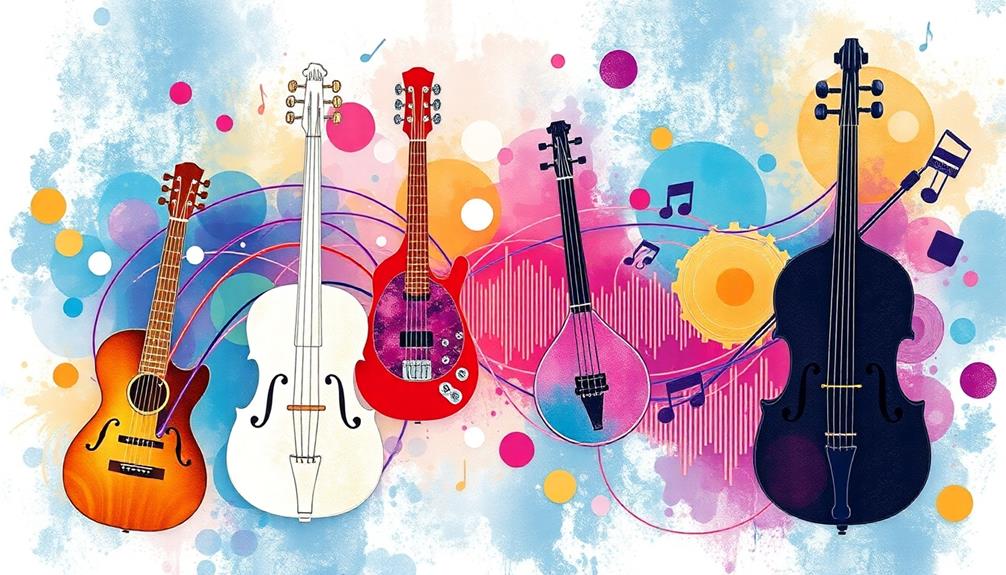
When you immerse yourself in sound design, understanding the characteristics of different genres is essential for crafting authentic tracks. Each genre has its unique traits, from instrumentation to production techniques. For instance, electronic genres rely heavily on synthesized sounds and robust percussion, while acoustic genres highlight organic instruments and live recordings. Recognizing these distinctions helps you make informed choices about sound layering.
Tempo is another critical factor; EDM typically sits between 120-130 BPM, while hip-hop ranges from 70-100 BPM. These differences influence the overall vibe of your tracks. Additionally, familiarize yourself with genre-specific sound palettes—country music often showcases acoustic guitars and fiddles, while rock leans on electric guitars and drums.
Using reference tracks can greatly enhance your understanding of these genres. Analyzing common chord progressions and song structures helps you create authentic soundscapes. For example, pop often follows a verse-chorus-verse format, while jazz incorporates complex harmonies and improvisation.
Importance of Sound Selection
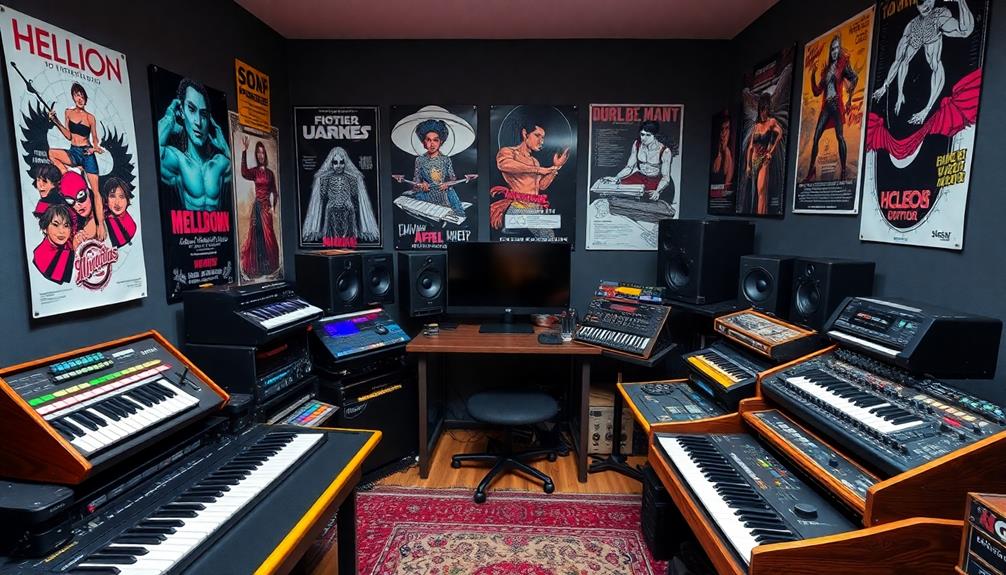
Choosing the right sounds is vital in sound design, as it fundamentally shapes the vibe and theme of your track. Sound selection often proves to be more impactful than traditional mixing techniques like EQ and compression; if you don't pair your sounds correctly, those techniques can complicate things.
A well-curated sound palette can elevate your production remarkably, making it essential to carefully consider each sound you use.
As a music producer, you might struggle with decision fatigue due to the overwhelming number of sample and preset options available. To combat this, focus on a specific genre and limit your choices to high-quality packs. Techniques like hot swapping for real-time sound previewing and A/B testing can streamline your sound selection process, helping you guarantee that the sounds you choose align with your track's intended vibe.
Additionally, organizing your samples into categories and creating custom folders in your DAW can enhance accessibility. This way, you can quickly find and utilize quality sounds during production, making your workflow more efficient and effective.
Techniques for Layering Sounds
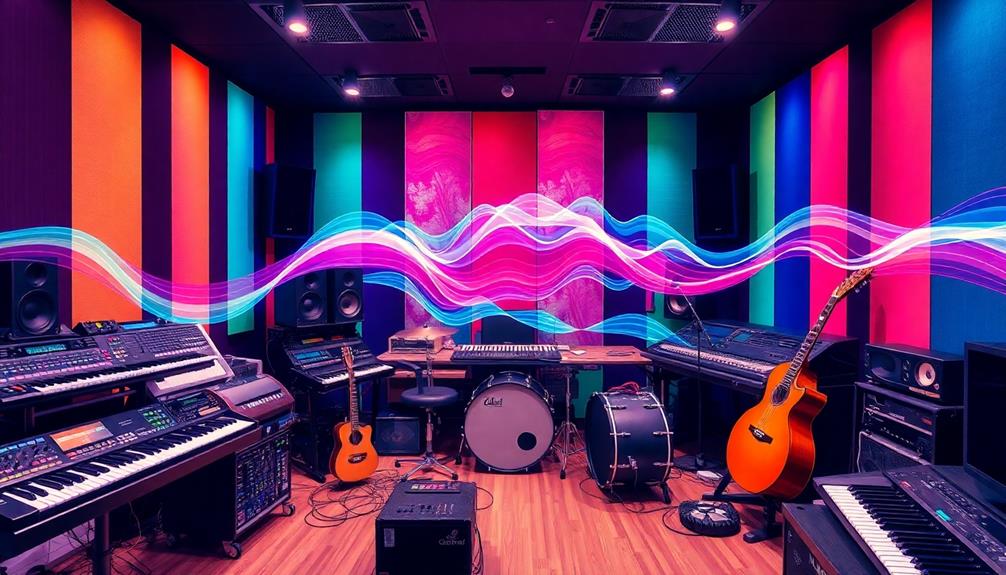
Sound selection lays the groundwork for your track, but layering techniques can elevate it to another level. To master the art of layering sounds in your sound design, focus on a few key strategies:
- Frequency Ranges: Pair low-frequency sounds, like a deep bass, with higher-pitched elements, such as synths. This combination creates a fuller sound without frequency masking.
- Multiple Samples: Layer different samples of the same instrument, adjusting each layer's volume and effects. This technique adds richness and dynamism to your mix.
- Attack and Release: Experiment with varying the attack and release settings of your layered sounds. This can yield complex textures that enhance emotional impact and depth.
To maintain clarity in your layered sounds, use EQ to carve out space for each layer, ensuring they complement rather than compete with one another.
Recording Authentic Audio Elements
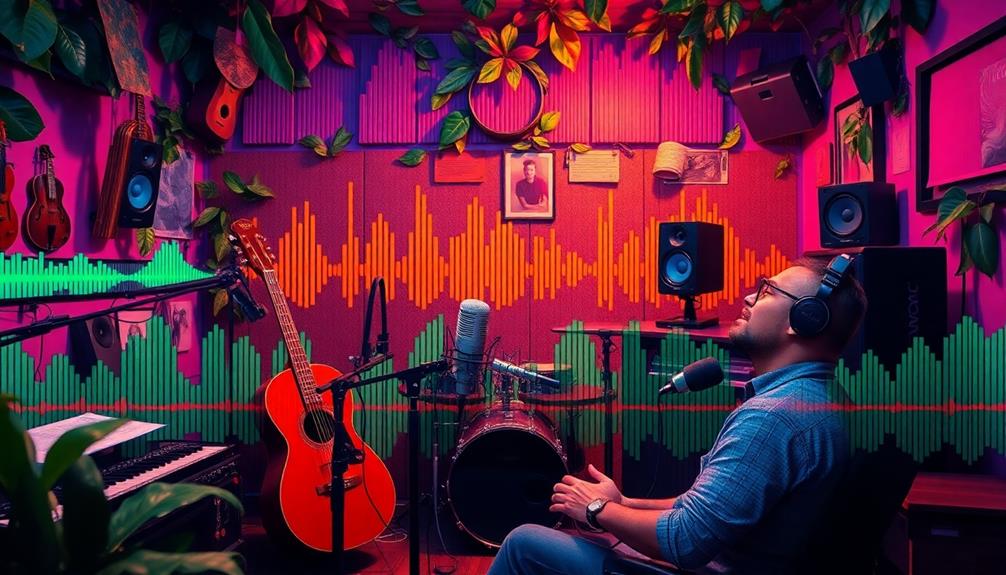
Recording authentic audio elements is vital for creating an immersive experience in film. When you focus on recording sound effects (SFX) on location, you capture unique sounds that enhance the realism of your project. Studio recordings often lack the character that location audio provides, so make it a priority to explore different environments.
To achieve the best results, utilize multiple microphones during on-set dialogue recording. This approach guarantees clear audio, especially in dynamic settings where background noise can interfere. Collaborate with your crew to allocate time specifically for capturing sound effects within your production schedule. This planning is critical for integrating authentic audio elements into your film's soundscape.
Don't underestimate the power of unique location sounds; they contribute considerably to the overall atmosphere. Recording realistic ambient sound helps create a cohesive auditory experience that aligns beautifully with your visual storytelling.
Regularly reviewing and integrating these sounds into the editing process allows you to identify opportunities for enhancing the audio landscape. By focusing on these techniques, you'll enrich the final product and elevate the viewer's experience.
Balancing and Mixing Strategies
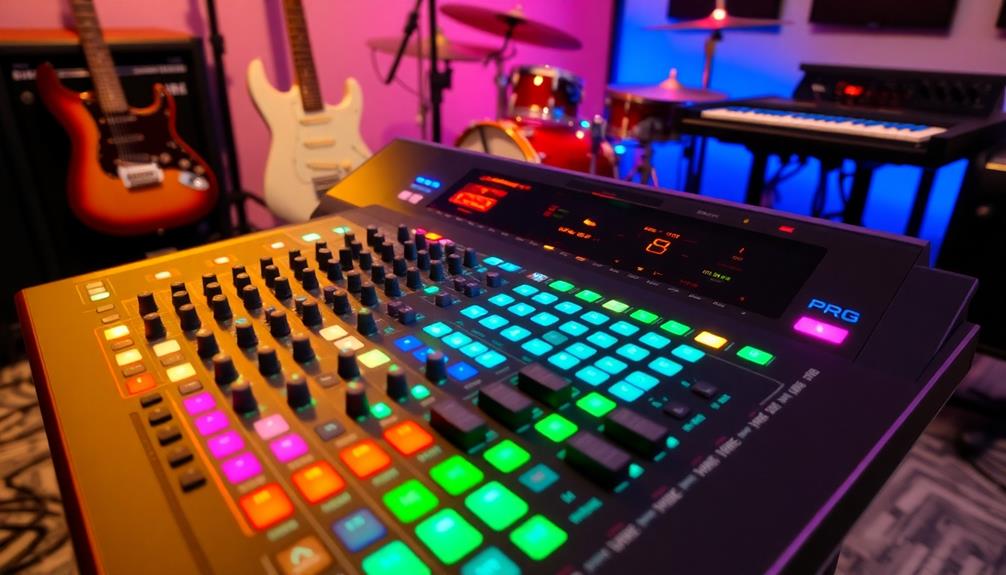
Achieving a well-balanced mix is essential for any film project, as it directly impacts the emotional tone and clarity of storytelling. To effectively balance different tracks, you need to take into account the following strategies:
- Prioritize Dialogue: Confirm that dialogue remains clear and prominent. It's the backbone of storytelling, so adjust levels to prevent background noise from overwhelming it. The integration of advanced latest breakthroughs in machine learning tech can also assist in enhancing dialogue clarity through improved audio processing techniques.
- Utilize Panning and EQ: Employ panning to create a spatial mix, allowing sounds to occupy their own place in the stereo field. EQ adjustments can help carve out frequencies for each element, enhancing clarity and emotional intensity.
- Volume Automation: Use volume automation to dynamically adjust levels throughout the scene. This technique allows you to emphasize key moments and maintain interest without losing coherence in the overall mix.
Regularly reference your mix on different playback systems, like headphones and speakers, to confirm it translates well across environments.
Incorporating feedback loops between sound and visual elements during editing will lead to greater cohesion, resulting in a more immersive experience for your audience. Balancing these elements effectively will elevate your film's impact.
The Role of Music and Silence
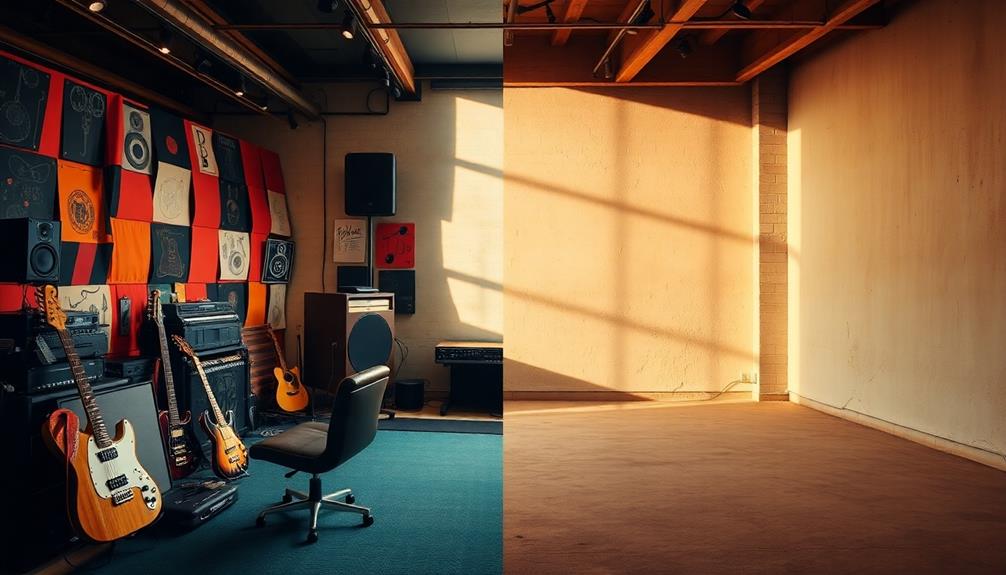
Music and silence are powerful tools in film sound design, shaping the audience's emotional journey and enhancing storytelling. The right music sets the genre and emotional tone, guiding viewers' expectations and reactions through auditory cues. Whether it's a haunting melody or an upbeat rhythm, music can evoke specific feelings, adding depth to your narrative and compensating for visual limitations.
Strategically using silence can amplify emotional intensity during critical scenes, focusing the audience's attention on performances and heightening their impact. When you blend music and silence effectively, you create a dynamic interplay that elevates tension and emotional engagement.
Remember, background music should complement the on-screen action without overshadowing it. Your actors' performances need to remain the focal point while the music enriches the story.
Subtle musical choices can weave themes and subtext into your film, making the narrative more profound. Consequently, pay close attention to the balance between music and silence; it's essential for a compelling sound design.
Utilizing Technology in Sound Design
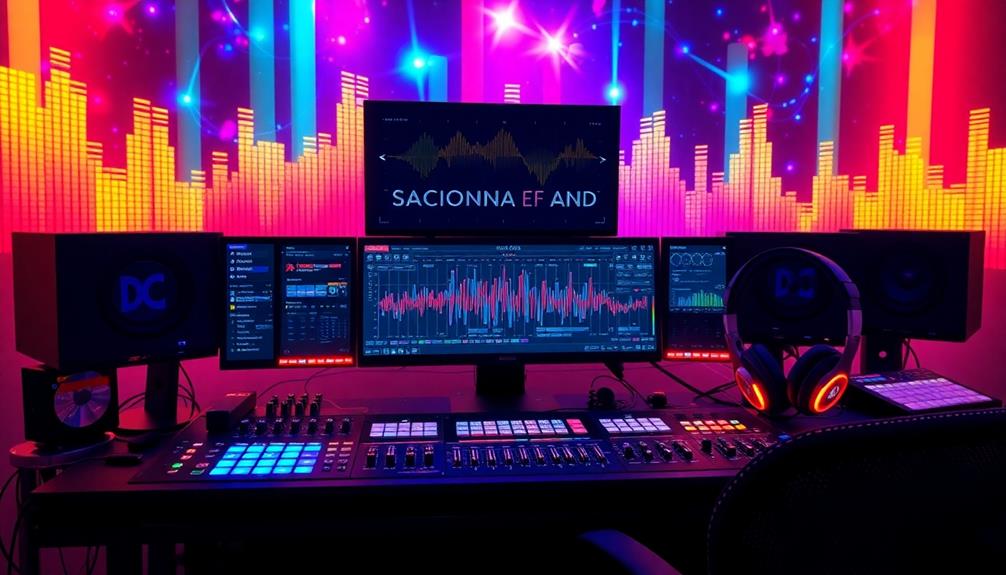
Incorporating technology into sound design opens up a world of creative possibilities.
You're going to use tools that not only enhance your workflow but also help you craft unique sounds that work well for specific genres.
Here are three vital tech elements you should consider:
1. Digital Audio Workstations (DAWs): Tools like Ableton Live allow you to manipulate and loop sounds easily, which is key for creating those genre-specific textures that make your tracks stand out.
2. Plugins and Software Synthesizers: With options like Serum or Omnisphere, you can explore a vast array of sounds.
These tools let you customize your sound palette, ensuring you develop dynamic soundscapes that resonate with current trends.
3. MIDI Controllers and Automation: These technologies enhance your precision, enabling you to make real-time adjustments.
This capability is essential for aligning your sound design with the unique characteristics of your chosen genre.
Continuous Learning and Adaptation
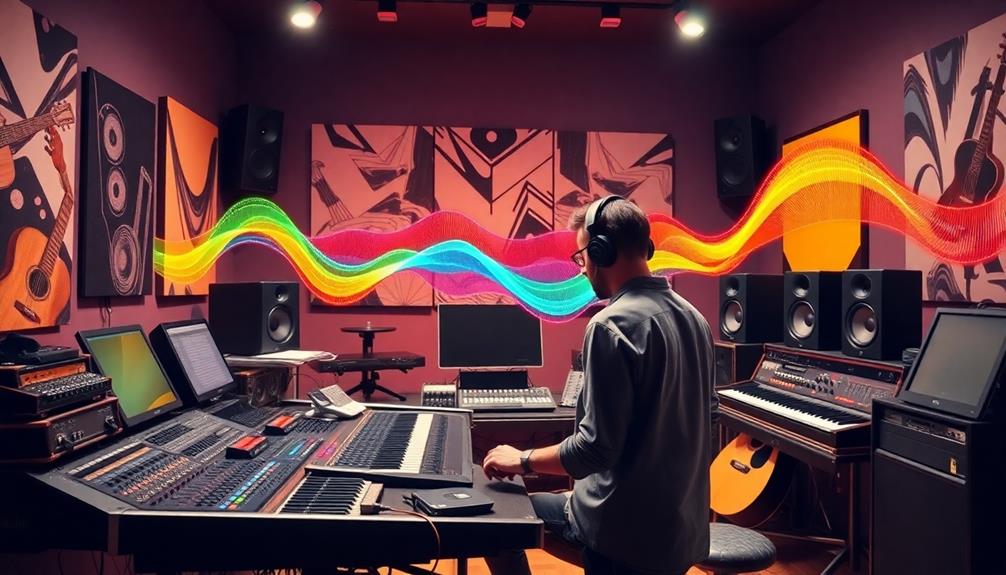
In the ever-evolving world of sound design, staying ahead means embracing continuous learning and adaptation. This journey involves regularly exploring new tools, techniques, and software advancements that can enhance your creativity and efficiency.
Don't hesitate to engage in live calls or workshops with experienced producers; they can provide real-time feedback and insights that help you grow. Additionally, leveraging AI in Business can inspire innovative approaches to sound design, helping you to automate certain processes and focus on creativity.
Experimentation is key, so try out different sound selection strategies and layering techniques. You might just discover something new that defines your unique sound.
Participating in online communities and forums allows you to share knowledge and seek advice, keeping you updated on industry trends and best practices.
Regular practice is essential. Reflecting on past projects helps you identify your strengths and weaknesses, enabling you to improve continuously.
As you adapt to the changing landscape of sound design, remember that each experience is an opportunity. Keep going, keep learning, and embrace the evolution of your craft.
Collaborating With Sound Professionals
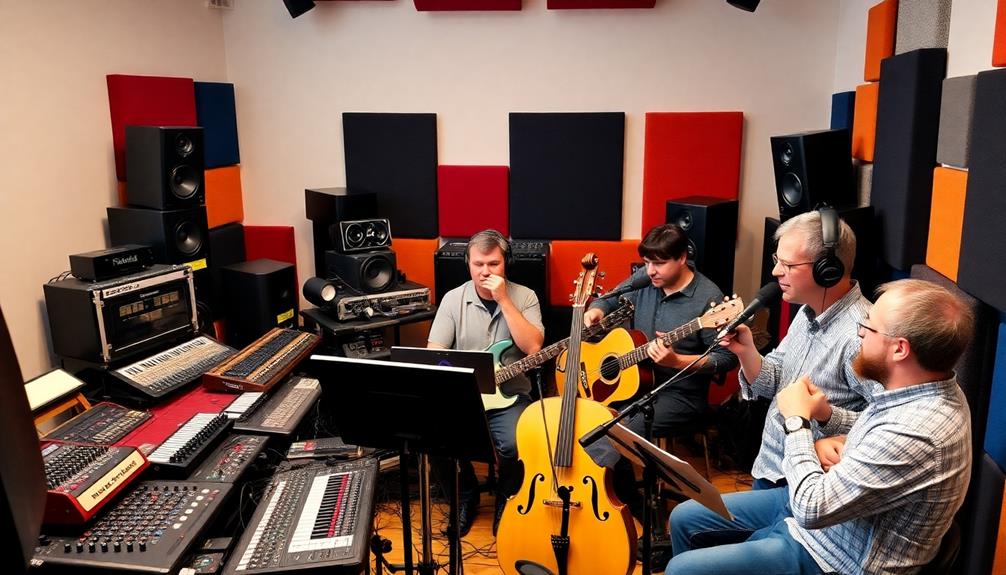
While collaborating with sound professionals can seem intimidating, it's a game-changer for enhancing your audio projects.
These experts, like sound designers and engineers, bring invaluable skills to the table, helping you create immersive audio experiences tailored to your genre.
To guarantee a successful collaboration, make sure to:
- Communicate Your Vision: Clearly express your project's narrative style and emotional tone to align the sound design with your vision.
- Involve Them Early: Bringing sound professionals into the fold early on allows for seamless integration of sound design into your visual storytelling, enhancing overall cohesiveness.
- Encourage Collaboration: Foster an environment where creative experimentation thrives, enabling sound professionals to contribute unique perspectives and innovative techniques.
Frequently Asked Questions
What Are the 4 Elements of Sound Design?
The four elements of sound design are dialogue, sound effects, foley, and music. You'll need to guarantee each part works together to create an engaging and immersive audio experience for your audience.
Where Do Sound Designers Get Their Sounds?
You can find sounds by exploring sample libraries like Splice or Loot Master. Engaging in online communities helps you discover recommendations, while field recordings and custom creations guarantee your projects feature unique, tailored audio elements.
How Do You Make the Best Sound?
To make the best sound, you need to carefully select and layer sounds that fit your vibe. Experiment with different textures and frequencies, and don't hesitate to organize your samples for quicker access during production.
How Do You Break Into Sound Design?
Did you know that over 80% of sound designers start as hobbyists? To break into sound design, immerse yourself in learning, experiment with DAWs, network with professionals, and seek constructive feedback to refine your skills.
Conclusion
To truly master genre-specific sound design, you've got to embrace the journey of exploration and creativity. Think of your soundscapes as a vibrant tapestry, where every thread adds depth and richness. By honing your skills, collaborating with others, and staying open to new ideas, you'll craft auditory experiences that resonate. So, let your imagination roam free, and remember, the symphony of sound awaits your touch—just waiting to transform your visions into reality. Dive into the endless possibilities that technology and innovation provide, using creative sampling techniques to explore uncharted auditory territories. By blending unconventional sounds with familiar tones, you can evoke emotions and tell stories that captivate your audience. Remember, the key to standout sound design lies in pushing boundaries while staying true to the essence of the genre you’re shaping.

